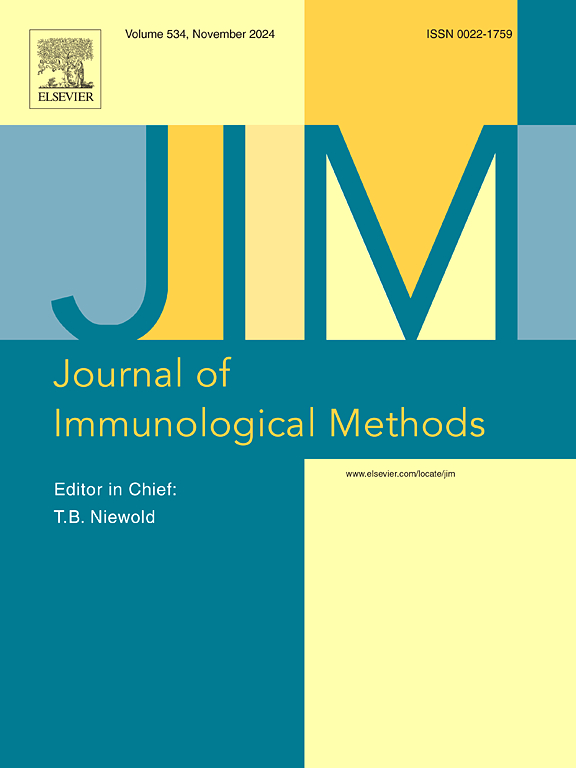Comprehensive normalization and binary classification methods for enhanced sensitivity and reproducibility in Luminex assay quantitation
IF 1.6
4区 医学
Q4 BIOCHEMICAL RESEARCH METHODS
引用次数: 0
Abstract
The Luminex assay is a powerful tool for large-scale quantitation of antibody levels and cytokines, but its utility can be limited by issues of specificity, sensitivity, and reproducibility. The corrections for background fluorescence and machine drift are essential steps in the normalization process. However, traditional methods often oversimplify these steps, failing to account for the complexity of the data, leading to the introduction of error and decreasing the sensitivity and reproducibility of the analysis. Furthermore, conventional methods to determine cut-points in binary measures do not consider the true distribution of the data, leading to arbitrary cut-points that compromise the integrity of the analysis. Here, we present a novel approach to normalize Luminex data and split the normalized bimodal data. Our method uses orthogonal regression of the measured fluorescence of a negative control bead and a blank bead to correct for background fluorescence, enhancing accuracy by preventing overcorrection due to cross-reactivity. To account for machine drift, we use a generalized additive model (GAM) on the standard curves to calculate a plate correction, thus reducing error and improving reproducibility. To distinguish between positive and negative results in bimodal measures, we use a clustering analysis to accurately split the data based on distribution. Finally, we developed a web application to easily carry out the developed method. These methods collectively increase sensitivity, specificity, and reproducibility of Luminex assay data analysis by effectively addressing the limitations of current normalization techniques, correcting for background fluorescence and machine drift, and improving the specificity and accuracy in splitting bimodal data.
综合归一化和二元分类方法提高灵敏度和重现性在Luminex测定定量。
Luminex检测是大规模定量抗体水平和细胞因子的强大工具,但其实用性可能受到特异性、敏感性和可重复性问题的限制。校正背景荧光和机器漂移是归一化过程中必不可少的步骤。然而,传统的方法往往过于简化这些步骤,未能考虑到数据的复杂性,导致误差的引入,降低了分析的灵敏度和可重复性。此外,在二元测量中确定截断点的传统方法没有考虑数据的真实分布,导致任意截断点损害了分析的完整性。本文提出了一种对Luminex数据进行归一化并拆分归一化双峰数据的新方法。我们的方法使用阴性对照珠和空白珠的测量荧光的正交回归来校正背景荧光,通过防止由于交叉反应性而导致的过度校正来提高准确性。为了解释机器漂移,我们在标准曲线上使用广义加性模型(GAM)来计算板校正,从而减少误差并提高再现性。为了区分双峰测量中的正结果和负结果,我们使用聚类分析来根据分布准确地分割数据。最后,我们开发了一个web应用程序来方便地实现所开发的方法。这些方法有效地解决了当前归一化技术的局限性,纠正了背景荧光和机器漂移,提高了拆分双峰数据的特异性和准确性,从而提高了Luminex分析数据分析的灵敏度、特异性和可重复性。
本文章由计算机程序翻译,如有差异,请以英文原文为准。
求助全文
约1分钟内获得全文
求助全文
来源期刊
CiteScore
4.10
自引率
0.00%
发文量
120
审稿时长
3 months
期刊介绍:
The Journal of Immunological Methods is devoted to covering techniques for: (1) Quantitating and detecting antibodies and/or antigens. (2) Purifying immunoglobulins, lymphokines and other molecules of the immune system. (3) Isolating antigens and other substances important in immunological processes. (4) Labelling antigens and antibodies. (5) Localizing antigens and/or antibodies in tissues and cells. (6) Detecting, and fractionating immunocompetent cells. (7) Assaying for cellular immunity. (8) Documenting cell-cell interactions. (9) Initiating immunity and unresponsiveness. (10) Transplanting tissues. (11) Studying items closely related to immunity such as complement, reticuloendothelial system and others. (12) Molecular techniques for studying immune cells and their receptors. (13) Imaging of the immune system. (14) Methods for production or their fragments in eukaryotic and prokaryotic cells.
In addition the journal will publish articles on novel methods for analysing the organization, structure and expression of genes for immunologically important molecules such as immunoglobulins, T cell receptors and accessory molecules involved in antigen recognition, processing and presentation. Submitted full length manuscripts should describe new methods of broad applicability to immunology and not simply the application of an established method to a particular substance - although papers describing such applications may be considered for publication as a short Technical Note. Review articles will also be published by the Journal of Immunological Methods. In general these manuscripts are by solicitation however anyone interested in submitting a review can contact the Reviews Editor and provide an outline of the proposed review.

 求助内容:
求助内容: 应助结果提醒方式:
应助结果提醒方式:


